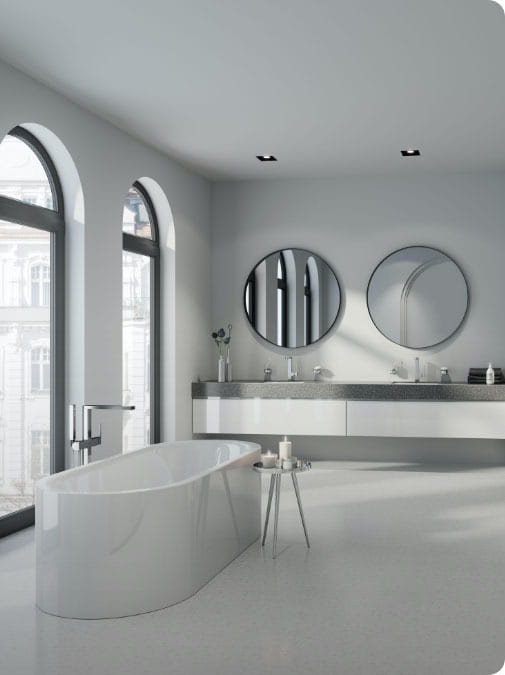DXV Fact Sheet
About DXV
DXV is a portfolio of luxury bath and kitchen products that reimagines the most influential design movements during the past 150 years: Classic (1890-1920), Golden Era (1920-1950), Modern (1950-1990), and Contemporary (1990-Present). The brand has been recognized with 23 product innovation and design awards in the past four years. DXV is part of LIXIL, a global leader in housing and building materials products and services.
Learn more at www.dxv.com, or follow us at facebook.com/dxv, twitter.com/DXV, youtube.com/DXVLuxury, pinterest.com/dxv, instagram.com/dxvluxury.
DXV products are available at kitchen and bath showrooms nationwide. Visit dxv.com or call (800) 227-2734.
About LIXIL
LIXIL makes pioneering water and housing products that solve everyday, real-life challenges, making better homes a reality for everyone, everywhere. Drawing on our Japanese heritage, we create world-leading technology and innovate to make high quality products that transform homes. But the LIXIL difference is how we do this; through meaningful design, an entrepreneurial spirit, a dedication to improving accessibility for all, and responsible business growth.
Our approach comes to life through industry leading brands, including LIXIL, GROHE, American Standard, INAX, and
TOSTEM, as well as specialty brands such as DXV. Over 70,000 colleagues operating in 150 countries are proud to make products that touch the lives of more than a billion people every day.
LIXIL is part of the LIXIL Group Corporation (TSE Code: 5938), the listed holding company for LIXIL’s portfolio of businesses.
Learn more at www.lixil.com, www.facebook.com/lixilgroup and www.linkedin.com/company/lixil-group.
DXV Design Movements
DXV comprises a premium selection of meticulously crafted fixture and faucet collections curated into four broad movements:
Classic, 1890 – 1920: A movement that saw opulence and modern technology converge. Design pushed beyond the boundaries of historicism and neoclassicism to become more fanciful and flowing, intricate and organic.
Golden Era, 1920 – 1950: A new spirit of experimentation was evident in the decorative arts, while the rise of industrial design led to controlled contours, simplified geometries, and reduced ornamentation — a thoughtful, refined aesthetic that reflected a society on the move.
Modern, 1950 – 1990: The power of the individual to reshape and reimagine the physical environment was affirmed through experimentation with materials and forms for design in which artful lines and flowing forms play against geometric structures.
Contemporary, 1990 – Today: Undogmatic and eclectic, today’s continually evolving design aesthetic may combine minimalistic forms with rich texture, ornate detail with natural material-of-the-moment solutions that reflect the complexity of our changing world.


